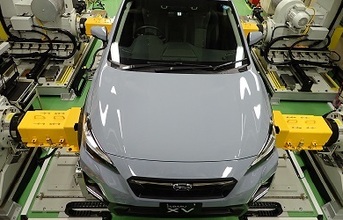
NI (Nasdaq: NATI) has announced that major automotive manufacturers like Subaru are using NI hardware-in-the-loop (HIL) technology to simulate actual road conditions for electric vehicle testing, eliminating environmental factors to reduce test time and costs.
Traditionally, engineers have conducted vehicle tests using finished cars on test courses or public roads to check the vehicle's performance and safety response. However, certain limitations, such as weather and fluctuating road surface conditions, can make it difficult to conduct reproducible tests on roads in a timely manner. Moreover, electric vehicles are extremely complex due to their many subsystems, which are all interdependent on each other. This complexity makes the job challenging for automotive test engineers with short development cycles and pressure to limit costs.
To combat these issues, Subaru replaced the roads in the validation tests with a NI HIL simulation solution built on NI PXI products and LabVIEW software. With the HIL system, Subaru can eliminate environmental factors and thoroughly and efficiently test a vehicle's embedded controller in a virtual environment before running real-world diagnostics on the complete system.
(Continued on the next page)





































